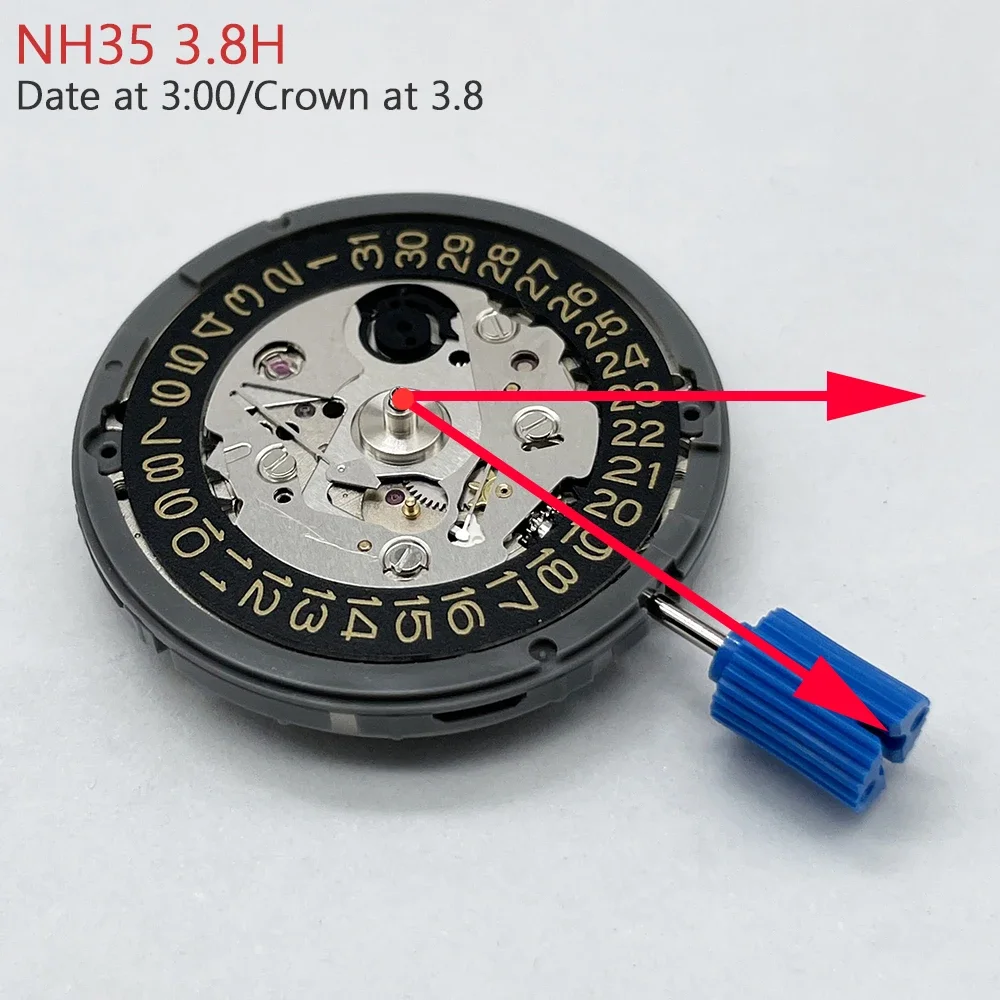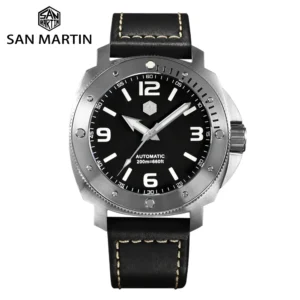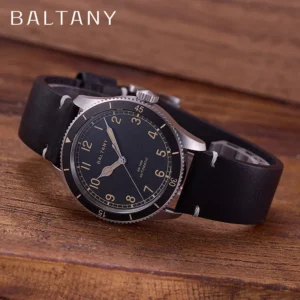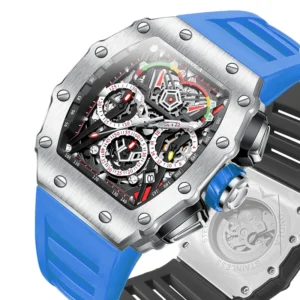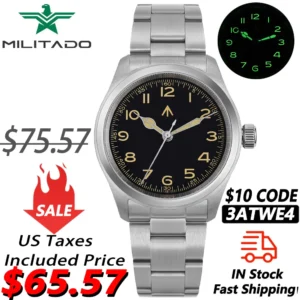Understanding Shock Resistance: The Critical Feature for Outdoor Timepieces
When venturing into the great outdoors, your timepiece faces numerous challenges – from accidental bumps against rocks to unexpected falls on rugged terrain. Shock resistance in watches refers to their ability to withstand these impacts without damage to their internal mechanisms or loss of accuracy. For hikers, climbers, and outdoor enthusiasts, this feature isn’t just a luxury – it’s essential for maintaining reliable timekeeping in demanding environments.
Throughout the evolution of watchmaking, shock resistance has transformed from a premium feature to a fundamental necessity for any serious outdoor timepiece. Before shock protection systems became standard, a simple fall could easily damage a watch’s delicate balance wheel, rendering the watch useless on an expedition.
The importance of shock resistance becomes clear when considering common outdoor scenarios:
- Scrambling over rocks during a hike
- Setting up camp with gear shifting and moving
- Sudden arm movements while trekking through dense forests
- Accidental drops while checking the time on uneven terrain
Understanding how rugged watch cases for outdoor adventures perform under stress can make the difference between relying on your timepiece throughout your journey or finding yourself with a broken watch miles from civilization. The evolution of shock resistance technology has drastically improved watch reliability, with modern watches capable of withstanding impacts that would have destroyed their predecessors.
The quality of a watch’s shock resistance directly relates to its overall durability factors in rugged watches, affecting everything from accuracy to longevity in challenging environments. Throughout this guide, we’ll explore the science behind shock protection, the systems that make it possible, and how to choose the most resilient timepiece for your outdoor adventures.
The Science Behind Watch Shock Resistance: How Watches Survive Impacts
To fully appreciate shock resistance in watches, it’s important to understand what constitutes a “shock” in watchmaking terms. A shock occurs when a sudden impact or jolt transfers energy to the watch’s movement, potentially damaging its delicate components.
The most vulnerable part of any mechanical watch is the balance wheel assembly – specifically the balance staff, which is a tiny axle that allows the balance wheel to oscillate. This component is roughly the thickness of a human hair yet bears tremendous responsibility for the watch’s accuracy. When a watch experiences a shock, the balance staff can flex or even break under the force, immediately stopping the watch and requiring professional repair.
This vulnerability explains why shock protection systems focus primarily on safeguarding the balance wheel and staff. These systems work on a simple yet ingenious principle: they allow controlled movement of the balance wheel’s pivots during impact while ensuring they return precisely to their original position afterward.
Most shock protection systems utilize jewel bearings – typically synthetic rubies or sapphires – that support the balance staff pivots. These jewels are incredibly hard and smooth, reducing friction while providing durable support. The genius of shock protection lies in how these jewels are mounted within the movement:
Rather than being rigidly fixed, the jewels are held in place by small springs that allow minute movement during impact. This spring-suspension principle absorbs and disperses the shock energy, preventing it from transferring directly to the delicate staff. Think of it like the suspension system in a car – when you hit a bump, the springs compress and expand, protecting the vehicle’s structure and occupants.
Before the introduction of shock protection systems, balance staff damage was among the most common reasons watches needed repair. Today’s advances in case protection features in tactical watches have dramatically improved durability, allowing outdoor enthusiasts to confidently wear their timepieces in demanding conditions without constant worry about damage from everyday impacts.
Essential Shock Protection Systems in Modern Watches
Modern watches employ various specialized systems to protect against shocks. Each has its unique approach, though all share the fundamental spring-suspension concept. Understanding these systems helps in evaluating a watch’s resilience for outdoor activities.
Incabloc: The Industry Standard
Developed in 1934, Incabloc remains the most widely used shock protection system in the watch industry. Its signature lyre-shaped spring allows the jewel bearing to shift slightly during impact and then return precisely to its original position. The system’s genius lies in its simplicity – it requires minimal space while providing exceptional protection. Most Swiss manufacturers, including many mid-range and luxury brands, rely on Incabloc for their mechanical watches.
KIF: The Swiss Alternative
KIF Parechoc is another Swiss system that functions similarly to Incabloc but with a different spring design. While less common than Incabloc, it’s favored by several prestigious Swiss manufacturers who appreciate its reliable performance and slightly different aesthetic within the movement.
Japanese Innovations: Diashock and Parashock
Seiko’s Diashock and Citizen’s Parashock systems represent Japanese approaches to shock protection. These systems achieve similar results through slightly different engineering approaches, proving particularly effective in the robust sport and field watches these companies are known for.
Rolex Paraflex: Proprietary Protection
Rolex’s proprietary Paraflex system represents one of the most advanced shock protection technologies. The company claims it offers 50% improved shock resistance over traditional systems. Its unique geometry and materials make it exceptionally efficient at absorbing impacts while maintaining precision.
During an impact event, these systems respond in milliseconds:
- The watch experiences sudden deceleration (hitting a rock, falling, etc.)
- The shock-absorbing spring allows the jewel bearing to move slightly
- The balance staff pivots flex within the controlled space
- Energy dissipates through the system rather than damaging components
- The spring immediately returns the jewel to its precise original position
- The watch continues running without losing accuracy
This sophisticated dance of microscopic components happens instantly and repeatedly throughout a watch’s life, protecting the delicate movement from impacts that would otherwise cause failure. The effectiveness of these systems is one reason why quality mechanical watches can remain reliable companions on rugged adventures for decades.
Beyond the Movement: External Shock Protection Features
While internal shock protection systems safeguard the movement, a truly shock-resistant watch also incorporates external design elements to absorb and deflect impacts before they reach the movement. These features form the first line of defense against the harsh conditions encountered during hiking, climbing, and other outdoor activities.
Case Design Elements
The watch case serves as the primary shield against external forces. Manufacturers employ various design strategies to enhance shock resistance:
Hollow/suspended case structures: Pioneered by Casio’s G-Shock series, this approach uses a “floating module” where the movement is suspended within the case, surrounded by cushioning material or air space. This design allows the outer case to absorb impact while minimizing force transferred to the movement.
Reinforced case construction: Strategic reinforcement at vulnerable points like lug attachments and crown guards adds structural integrity where watches commonly experience stress.
Protective bezel designs: Raised bezels extend beyond the crystal, taking the brunt of impacts that might otherwise shatter the watch face. This design element is particularly common in automatic field military watches designed for tactical use.
Integrated crown guards: These extensions of the case protect the vulnerable crown and stem from impacts and prevent accidental crown manipulation.
Material Choices for Enhanced Durability
The materials used in watch construction significantly influence shock resistance:
Case materials: Traditional stainless steel offers excellent durability, while titanium provides similar strength with less weight. Advanced carbon composites and ceramic materials offer cutting-edge protection in premium models. Many rugged automatic watches utilize these materials specifically for their shock-absorbing properties.
Crystal options: Sapphire crystal provides superior scratch resistance but can be more brittle than mineral crystal during impacts. Some manufacturers use slightly thicker sapphire or specialty treatments to improve shock resistance while maintaining scratch protection.
Strap attachment designs: Secure, flexible attachments prevent the case from direct impact when the strap receives tension. Integrated designs or robust spring bars reduce failure points where the strap meets the case.
The most shock-resistant watches combine these external features with sophisticated internal protection systems. Casio’s G-Shock represents perhaps the most famous example of comprehensive external shock protection, with its hollow module design surrounded by multiple cushioning elements. However, many traditional watchmakers now incorporate similar principles in more subtle ways, creating field watches that maintain classic aesthetics while providing modern levels of durability.
Industry Standards: What Makes a Watch Officially “Shock Resistant”
When a watch claims to be “shock resistant,” it should meet specific industry standards rather than simply making marketing claims. The primary benchmark for shock resistance is ISO 1413, an international standard that establishes minimum requirements for watches to carry the “shock resistant” label.
The ISO 1413 Standard
This standardized testing protocol involves:
- A 3-foot (1-meter) drop test onto a hardwood surface from a horizontal position
- A maximum allowable deviation in accuracy of ±60 seconds per day after impact
- Testing using specialized pendulum hammers that deliver precisely calibrated impacts
- Verification that no visible damage occurs to the movement or case
For a watch to officially qualify as “shock resistant,” it must pass these tests while maintaining accurate timekeeping within the specified parameters. This standard represents the minimum threshold for shock resistance in quality watches.
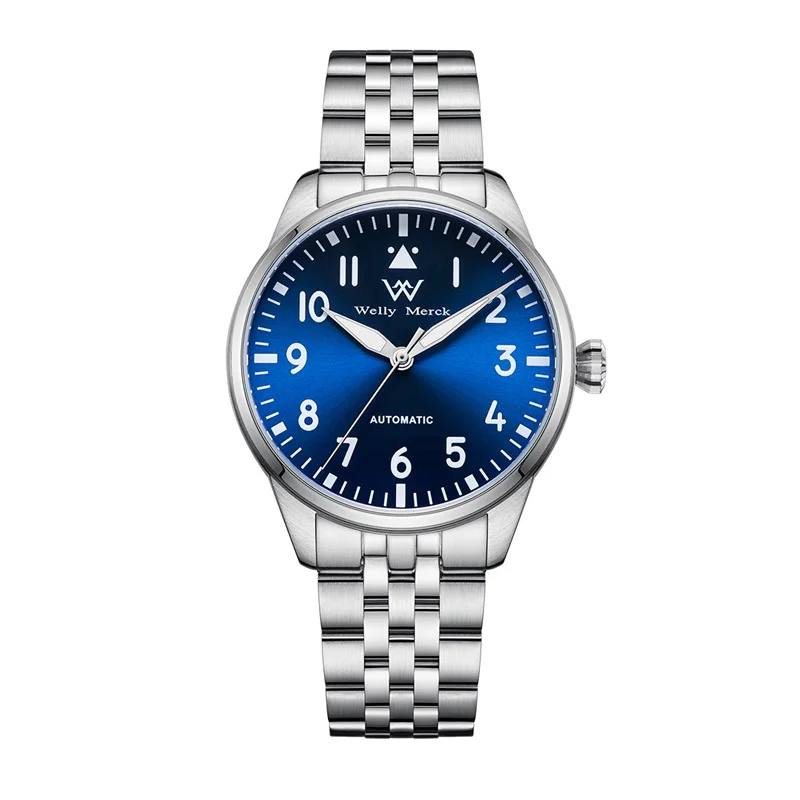
Beyond the Minimum Standard
Many manufacturers go well beyond the basic ISO requirements, particularly for watches designed for rugged outdoor use:
- Military specification testing (MIL-STD) applies more rigorous standards for watches intended for tactical applications
- Proprietary testing protocols often subject watches to repeated impacts from multiple angles
- Some manufacturers test at greater drop heights or onto harder surfaces
- Impact resistance may be tested at various temperatures to simulate real-world conditions
The engineering behind adventure watch cases often incorporates design elements specifically to exceed these minimum standards. G-Shock famously tests their watches by dropping them from buildings or running them over with vehicles – demonstrations that far exceed the ISO requirements.
Understanding these standards provides context for evaluating watch marketing claims. While many watches meet the minimum ISO 1413 requirements, those designed specifically for hiking, climbing, and field use typically offer significantly greater protection. When shopping for an outdoor timepiece, look for specific details about shock testing rather than simply the “shock resistant” label, which only indicates compliance with the basic standard.
Mechanical vs. Quartz: Comparing Shock Resistance Performance
When selecting a watch for outdoor adventures, the choice between mechanical and quartz movements significantly impacts shock resistance. Each movement type has inherent advantages and vulnerabilities when exposed to impacts.
Quartz Movements: Naturally More Shock Resistant
Quartz watches generally offer superior shock resistance due to their fundamental design:
Advantages:
– Fewer moving parts overall (typically 50-100 vs. 200+ in mechanical movements)
– No delicate balance wheel or escapement mechanism
– Solid-state electronics rather than purely mechanical components
– No winding mechanism that can be damaged by shock
– Less affected by positional changes during impacts
These characteristics make quartz watches an excellent choice for extreme activities where repeated heavy impacts are expected. Their simplified construction means fewer components that can be damaged or displaced during shock events.
Mechanical Movements: Traditional with Modern Protection
Mechanical watches have inherent challenges regarding shock resistance:
Challenges:
– Complex gear trains with multiple interacting components
– Delicate balance wheel oscillating at high speeds
– Precision parts with minimal tolerances
– Energy stored in the mainspring can amplify damage during impacts
However, modern mechanical watches have significantly improved their shock resistance through:
– Sophisticated shock protection systems like Incabloc and KIF
– Advanced materials for balance wheels and hairsprings
– Secure movement mounting systems within cases
– Improved lubricants that maintain performance during stress
Many enthusiasts prefer tactical automatic watches despite these challenges, appreciating their craftsmanship and self-sustaining power generation while accepting modest compromises in extreme shock resistance.
Practical Considerations for Outdoor Use
For most hiking and field applications, high-quality mechanical watches with good shock protection systems will perform reliably. They can withstand typical bumps, vibrations, and occasional light impacts encountered on trails and during normal outdoor activities.
However, for extreme scenarios like rock climbing, mountain biking, or activities with high impact potential, quartz watches maintain an edge in pure durability. Solar-powered quartz options offer particularly good reliability for extended expeditions by eliminating battery replacement concerns while maintaining superior shock resistance.
The choice ultimately depends on your specific activities, personal preferences regarding watch technology, and how you balance factors like craftsmanship against absolute durability in extreme conditions.
Key Features to Look For in Shock-Resistant Outdoor Watches
When shopping for a shock-resistant watch for hiking or field use, several key features contribute to overall durability and performance in challenging conditions. This checklist will help you evaluate watches based on their ability to withstand impacts during outdoor adventures.
Essential Shock Resistance Features
Shock Protection System:
– Verify the presence of a named shock protection system (Incabloc, KIF, Diashock, etc.)
– For mechanical watches, this system is non-negotiable for outdoor use
– Some high-end watches feature multiple or enhanced protection systems
Case Construction:
– Look for robust cases with minimal seams or potential failure points
– Reinforced lugs reduce the risk of breakage during impacts
– Integrated design where the case, bezel, and back form a solid unit
– Thickness of at least 10-12mm provides structural integrity for most field watches
Case Materials:
– 316L stainless steel offers excellent durability and corrosion resistance
– Titanium automatic watches provide similar strength with reduced weight
– Carbon composites or ceramic components add protection in premium models
Crystal Protection:
– Sapphire crystal with anti-reflective coating offers optimal scratch resistance
– Look for slightly recessed crystals or raised bezels that shield the face
– Some manufacturers use sapphire-mineral hybrid crystals for improved shock performance
Crown and Button Protection:
– Screw-down crowns improve water resistance and prevent damage during impacts
– Crown guards (extensions of the case that shield the crown) provide crucial protection
– Recessed pushers on chronographs prevent accidental activation and damage
Complementary Durability Features
Water Resistance:
– Minimum 100m (330ft) rating for outdoor watches
– Water resistance directly correlates with case sealing quality and overall durability
– Higher ratings typically indicate more robust gaskets and case construction
Secure Strap Attachments:
– Integrated straps or robust spring bars reduce failure points
– NATO-style straps provide backup security if one attachment point fails
– Quick-release designs should be avoided for serious outdoor use unless specifically engineered for durability
Movement Selection:
– Consider quartz for extreme activities with heavy impacts
– For mechanical watches, verify the specific shock protection system
– Automatic movements eliminate crown vulnerability associated with manual winding
When prioritizing features, consider your specific activities and environments. For technical climbing or high-impact sports, emphasize external protection features like case construction and crown guards. For general hiking and fieldwork, focus on balanced protection with good water resistance and reliable movement shock protection.
Military Inspired Automatic Watches, Rugged Automatic Watches, Tactical Automatic Watches
Price range: $852.14 through $994.60 Select options This product has multiple variants. The options may be chosen on the product pageBronze Automatic Watches, Military Inspired Automatic Watches, Professional Spec Dive Watches
Price range: $1,442.21 through $1,442.82 Select options This product has multiple variants. The options may be chosen on the product pageProfessional Spec Dive Watches, Titanium Automatic Watches
$574.74 Select options This product has multiple variants. The options may be chosen on the product pageClassic Pilot Watches, Military Inspired Automatic Watches
$561.00 Select options This product has multiple variants. The options may be chosen on the product pageRugged Automatic Watches, Unique Automatic Watches
Price range: $228.96 through $231.10 Select options This product has multiple variants. The options may be chosen on the product pageClassic Field Watches, Military Inspired Automatic Watches
Price range: $280.87 through $338.51 Select options This product has multiple variants. The options may be chosen on the product page
Leading Brands in Shock-Resistant Field and Hiking Watches
Several watchmakers have established reputations for producing exceptionally shock-resistant timepieces suitable for outdoor adventures. These brands approach shock protection through different design philosophies and technical innovations.
Casio G-Shock: The Benchmark for Extreme Durability
Casio’s G-Shock line represents the gold standard in shock-resistant watches, with models specifically designed to withstand extraordinary abuse:
- Hollow case structure with the module “floating” in a protective housing
- Multi-layer protection including cushioning resin and specialized alpha gel
- Models tested to withstand falls from heights significantly exceeding industry standards
- Wide range from affordable basic models to premium options with additional features
Notable models include the Mudmaster series for extreme environments and the Rangeman with enhanced navigation features for hikers.
Traditional Field Watch Specialists
Several brands focus specifically on robust field watches with impressive heritage:
- Hamilton: Known for military-inspired designs with modern shock protection systems
- Marathon: Supplies watches to military forces with emphasis on shock and water resistance
- Bertucci: Specializes in titanium field watches with integrated case/lug design for enhanced durability
These manufacturers typically combine traditional field watch aesthetics with modern shock protection technology, creating timepieces that balance heritage appeal with practical durability.
Premium Outdoor Watch Options
For those seeking higher-end options with exceptional shock resistance:
- Victorinox: The I.N.O.X. line undergoes over 130 durability tests, including being run over by tanks
- Sinn: German-engineered watches with specialized shock absorption systems
- Bremont: Features proprietary “Trip-Tick” case construction with exceptional impact resistance

Outdoor-Focused Smartwatches
Modern smartwatches designed for outdoor use often incorporate impressive shock resistance:
- Garmin Instinct: Features military-grade durability ratings and fiber-reinforced polymer cases
- Suunto: Renowned for robust construction suitable for mountaineering and extreme sports
The approach to shock protection varies across these brands, from Casio’s overt emphasis on protection through visibly rugged designs to the more subtle engineering in traditional field watches. Titanium rugged watches represent a sweet spot for many outdoor enthusiasts, offering excellent shock resistance with reduced weight compared to steel alternatives.
Price ranges vary significantly, from affordable G-Shock models starting under $100 to premium mechanical field watches exceeding $1,000. The good news is that effective shock resistance can be found at various price points, with higher investments typically buying additional features rather than fundamentally better protection.
Practical Care Tips: Maintaining Your Shock-Resistant Watch
Even the most durable shock-resistant watch benefits from proper care and maintenance. These practical tips will help maximize your timepiece’s longevity and performance during outdoor adventures.
Regular Inspection and Care
- Visual check before adventures: Examine the crystal, case, and crown for any damage that might compromise water or shock resistance
- Clean after exposure: Rinse with fresh water after exposure to salt water, mud, or dust
- Dry properly: Use a soft cloth to thoroughly dry the watch, paying special attention to areas around the crown and case back
- Strap maintenance: Clean fabric straps regularly and condition leather straps to prevent cracking that can lead to watch drops
Type-Specific Maintenance
For Mechanical Watches:
– Have the watch serviced by a professional every 3-5 years
– If you notice decreased accuracy after a significant impact, consider an immediate service
– Avoid magnetized environments which can affect accuracy and potentially movement components
For Quartz Watches:
– Replace batteries before expeditions to prevent mid-trip failures
– For solar models, ensure adequate exposure to light before extended trips
– Have gaskets checked and replaced during battery changes to maintain water resistance
Warning Signs That Require Attention
Several indicators suggest your watch’s shock resistance might be compromised:
- Unusual noise from inside the case when moved
- Moisture under the crystal
- Crown that feels loose or gritty when operated
- Sudden changes in timekeeping accuracy
- Visible damage to the case, especially around seals
Addressing these issues promptly can prevent more serious damage during your next outdoor adventure. Remember that even watches designed for extreme conditions have their limits – proper care extends their useful life and reliability.
When Shock Resistance Might Not Be Enough: Know Your Watch’s Limits
Despite advances in shock protection technology, every watch has limitations. Understanding these boundaries helps set realistic expectations and prevents disappointment when pushing your timepiece to extremes.
Even the most robust watches have vulnerability thresholds. Casio’s legendary G-Shock watches, while designed to withstand extraordinary abuse, can still fail under extreme circumstances. Mechanical watches, regardless of their shock protection systems, contain delicate components that can be damaged by sufficient force.
Activities that may exceed typical shock resistance capabilities include:
- High-impact sports like mountain biking on technical terrain
- Rock climbing with frequent impacts against hard surfaces
- Activities involving power tools or heavy machinery vibrations
- Sports with potential for direct impacts to the watch face
For these scenarios, consider whether wearing a watch is necessary at all, or opt for the most durable option available (typically a specialized G-Shock or similar design). Watches with irreplaceable value – whether monetary or sentimental – might be better left at home during extreme activities.
The rugged watches for extreme conditions offer impressive protection, but recognizing their limitations helps prevent disappointment and extends their service life. Sometimes the best protection is knowing when to remove your watch for particularly risky activities.
Common Questions About Shock Resistance in Outdoor Watches
Can a shock-resistant watch survive any fall?
No, shock-resistant watches have limits. While watches meeting the ISO 1413 standard can survive a 3-foot drop onto hardwood, higher falls or impacts onto harder surfaces may still cause damage. Even G-Shock watches, despite their impressive durability, have breaking points. The shock resistance rating indicates a minimum standard rather than indestructibility.
What happens if my shock-resistant watch gets damaged?
If a shock-resistant watch sustains damage from an impact, the nature of the damage depends on the force involved. Minor impacts might cause temporary accuracy issues that resolve themselves. More significant impacts could damage the shock protection system itself, the movement, or external components like the crystal or crown. If you notice unusual behavior after an impact, having the watch inspected by a professional is advisable.
Which activities pose the greatest risk to watches?
Activities with direct, concentrated impacts present the highest risk. Rock climbing, where the watch may strike directly against hard surfaces, is particularly challenging for watch durability. Similarly, mountain biking over rough terrain creates repeated vibrations and potential impacts. Swimming or diving with non-screwed down crowns also creates vulnerability, as water resistance and shock resistance often work together to protect the movement.
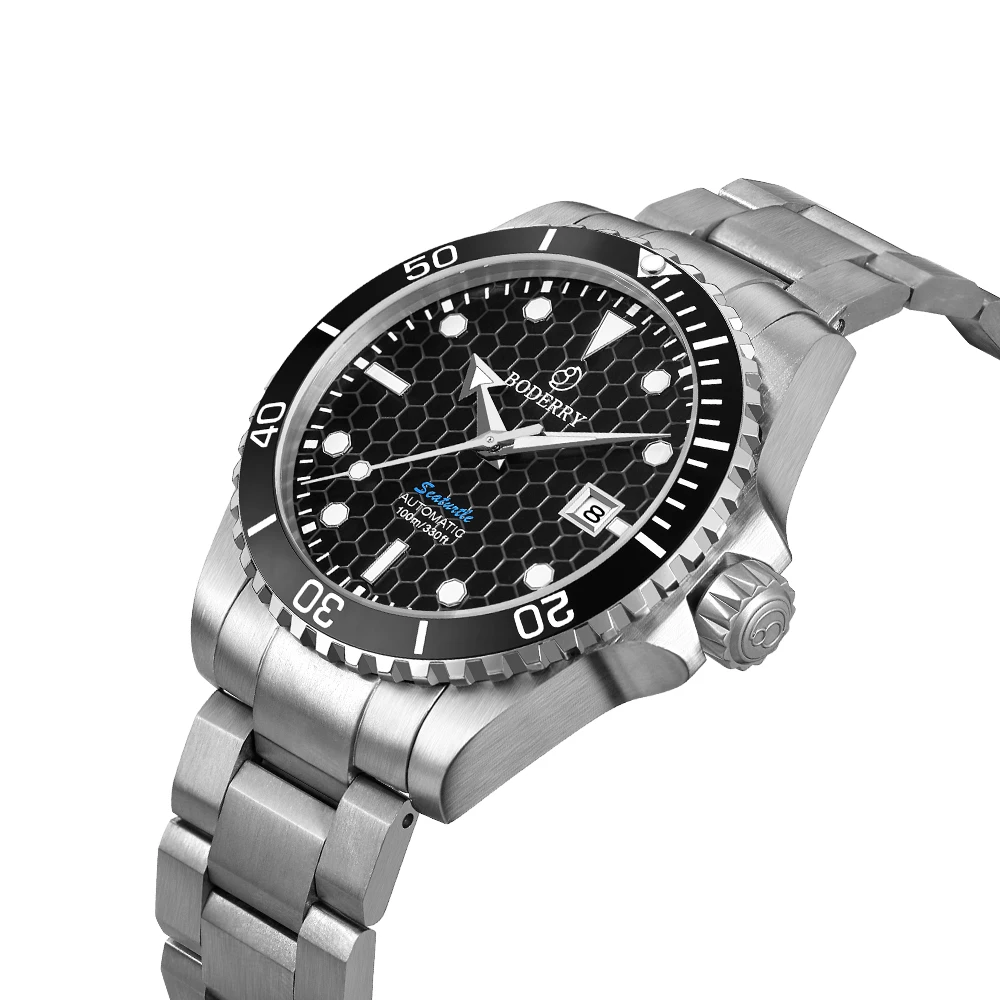
Is a G-Shock more durable than a mechanical field watch?
Generally, yes. G-Shock watches are specifically engineered with shock resistance as their primary design goal, using multiple protective elements and quartz movements with fewer vulnerable components. Quality mechanical field watches have excellent shock protection systems, but their complex movements inherently contain more delicate parts that can be damaged. For extreme conditions where durability is the only consideration, G-Shock typically offers superior protection.
How often should shock protection systems be serviced?
Shock protection systems in mechanical watches should be inspected during regular servicing intervals, typically every 3-5 years. Unlike parts that wear through regular use, shock protection generally only requires service after significant impacts. During a standard service, a watchmaker will verify that the system remains properly aligned and functional. Quartz watches with shock protection typically don’t require specific maintenance of these systems.
Beyond Shock Resistance: Other Durability Features for Outdoor Watches
While shock resistance is crucial for outdoor watches, it represents just one aspect of overall durability. Several complementary features work alongside shock protection to create truly robust timepieces for adventure.
Water Resistance and Shock Protection
Water resistance and shock resistance share an interconnected relationship. Both rely on effective case sealing and gasket integrity. A watch that loses water resistance due to impact may soon suffer internal damage from moisture. Look for watches with at least 100m water resistance for general outdoor use, as these typically feature more robust case construction that enhances both water and shock protection.
Magnetic Resistance
Modern outdoor environments often contain magnetic fields from equipment, electronics, and even some geological features. Magnetism can affect a watch’s accuracy or even stop it completely. Anti-magnetic properties protect the movement from these invisible forces, particularly important for mechanical watches used around technical gear. Many field watches include basic magnetic resistance, while some specialized models offer enhanced protection.
Temperature Resilience
Extreme temperatures can affect watch performance and durability. High-quality watches designed for outdoor use maintain accuracy across a wide temperature range and use lubricants that perform in both cold and hot conditions. This resilience complements shock resistance by ensuring the movement remains properly functioning regardless of environmental conditions.
Power Source Considerations
For extended expeditions, power reliability becomes crucial. Automatic mechanical watches generate power through motion, while solar quartz models harness light energy – both offering advantages for long-term use without external power. These self-sustaining power systems complement shock resistance by eliminating vulnerability points like battery compartments and reducing the need for crown manipulation that can compromise seals.
The most effective outdoor watches balance these durability features according to intended use. A mountaineering expedition might prioritize temperature resistance and reliable power generation, while a diving excursion demands superior water resistance alongside shock protection. Understanding this interplay helps in selecting watches that will remain reliable companions through all your outdoor adventures.

